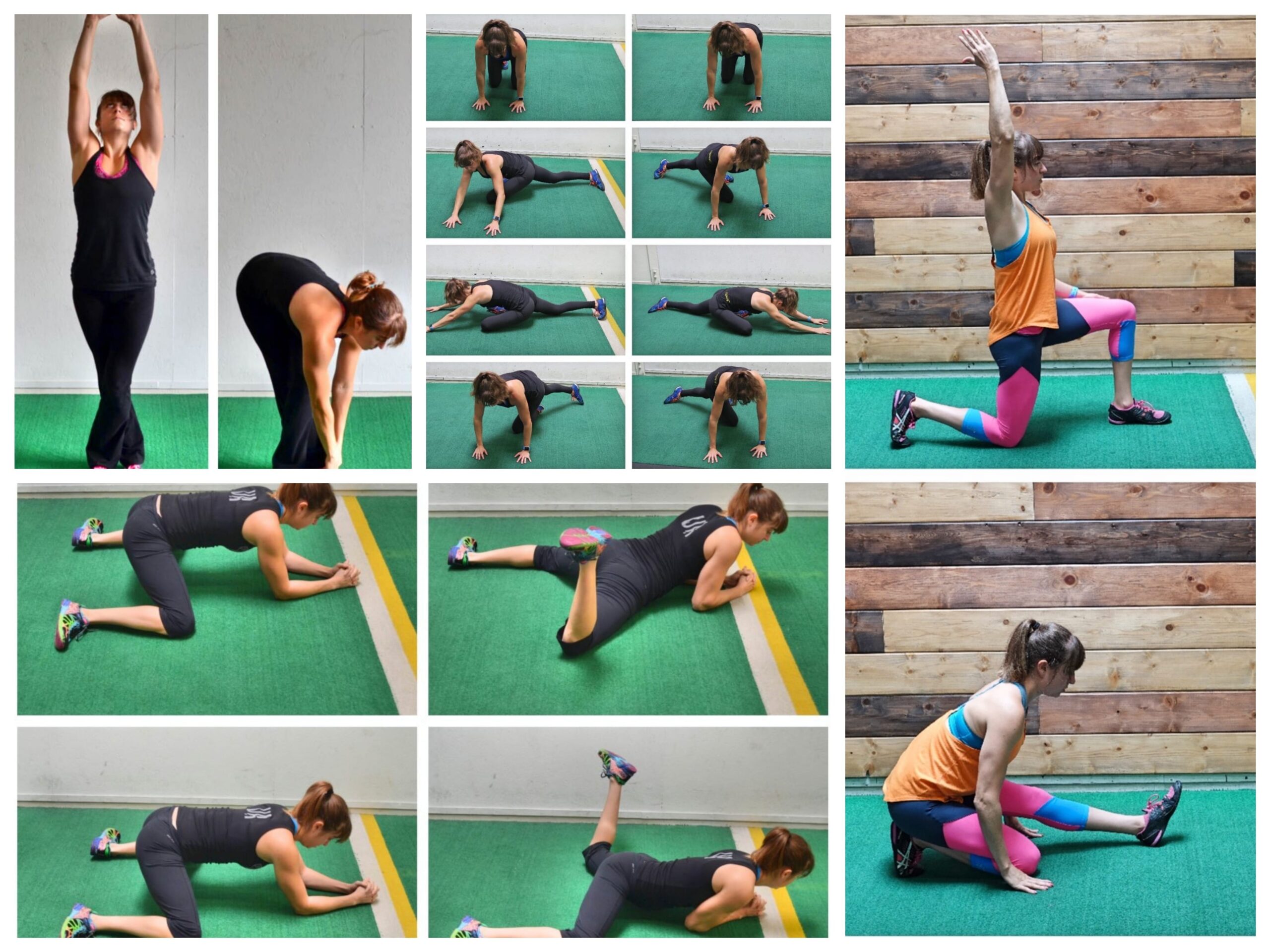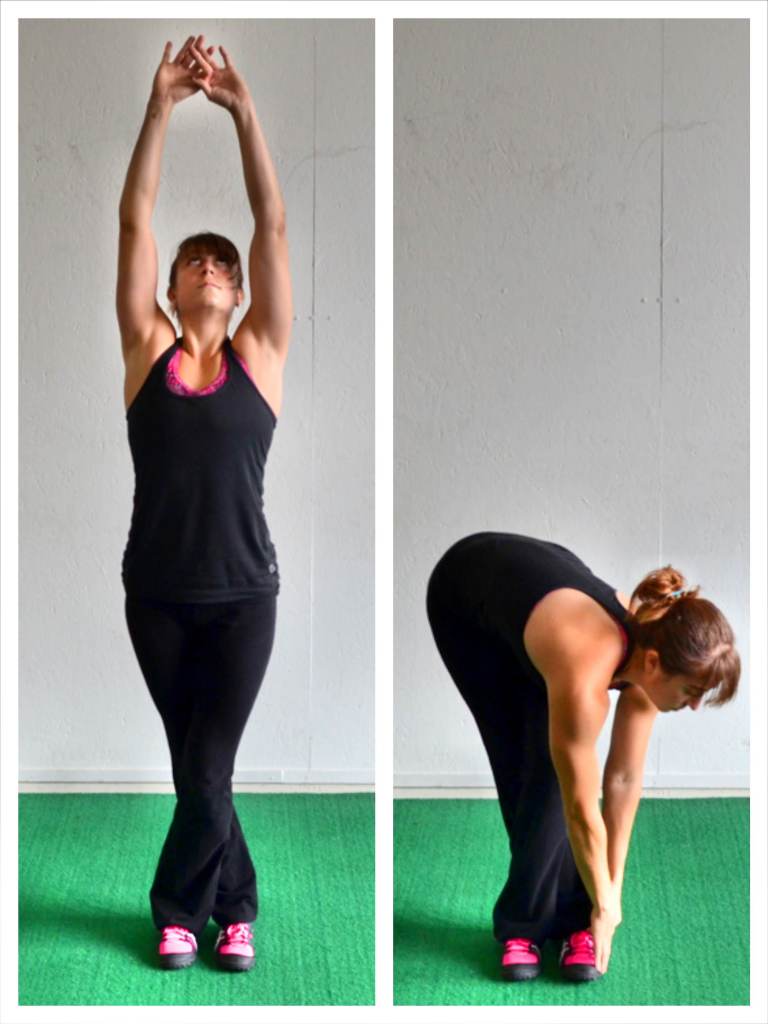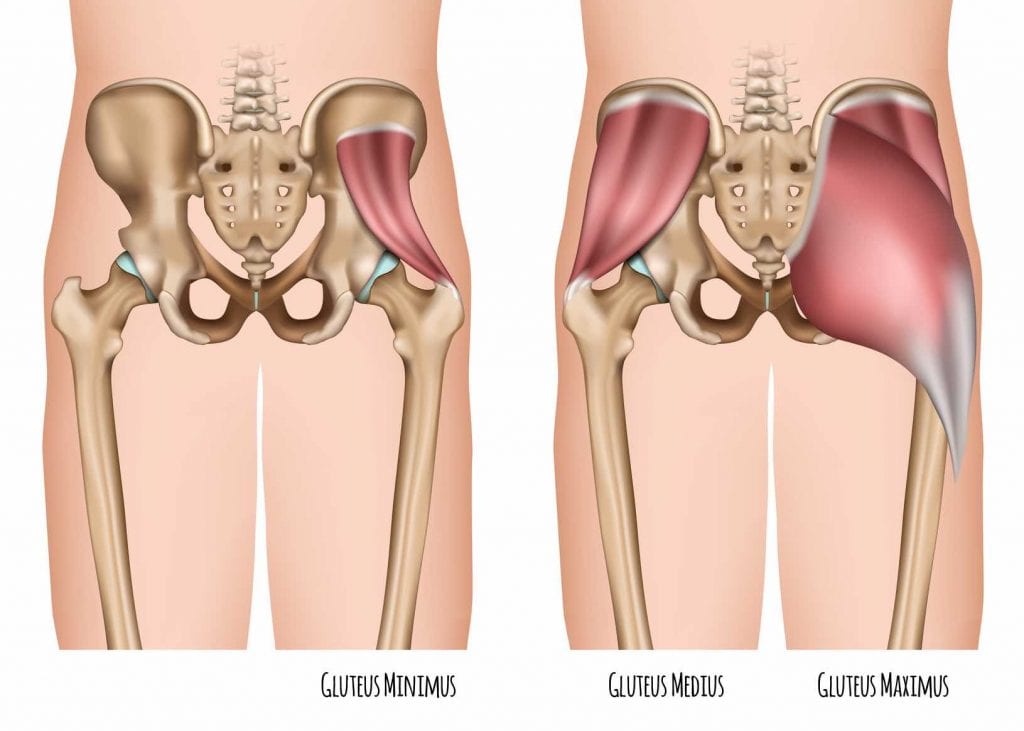
If you want to improve your hip mobility to prevent lower back, hip and even knee pain, it is important you include some dynamic stretches prior to your workouts.
By using these stretches prior to your workout, you can improve your hip mobility while relaxing tight and overactive muscles. This will then allow you to get the correct muscles working during your workout and strengthen through a full range of motion.
Now you may be thinking, “I’ve heard not to stretch prior to a workout?” All stretches are not created equal!
While static stretches aren’t recommended before a workout because holding the stretch has been shown to reduce power and strength, dynamic stretching doesn’t have the same affect. It actually PRIMES the body for work.
It warms the body up, primes your nervous system for work while also improving your mobility and flexibility to help you avoid compensations and injury.
So before your next lower body workout, try including these 4 stretches in your warm up routine to improve your hip mobility!
Half Kneeling Hip To Hamstring Stretch:

This stretch will help you relax tight hip flexors and improve your hip mobility with a unilateral focus. Because you’ll address each side independently, you can do a few extra on your tighter side to help you start to work to correct, and even avoid, any compensations during your lifts.
This stretch is key to include because tight hips can hinder your glutes from engaging properly and lead to you instead overusing your lumbar spine.
To do the Half Kneeling Hip to Hamstring Stretch, start half kneeling with your back knee about under your hip. Squeeze your glute on that side to drive your hip forward as you reach overhead. Pause for a second as you squeeze.
Then sit back, lowering your arm as you extend your front leg. Hinge at the hips as you sit back and lean over that leg to feel your hamstring stretch. Then move back to half kneeling and repeat.
Make sure you really squeeze your butt to drive your hip into extension and don’t simply arch your lower back as you raise your hand up and drive forward.
Frog Stretch With Internal Rotation:

Tight adductors, aka your inner thighs, can cause your glute medius to not fire as efficiently or effectively as it should, which can lead to lower back, hip and knee pain.
This stretch not only improves the flexibility of your adductors but works on the internal rotation of your hip, which is key to preventing lower back pain and can help improve your squats and deadlifts not to mention your strength with rotational moves.
Limited hip internal rotation has been shown to be a culprit in a variety of hip injuries and issues so making sure that your doing what you can to improve your rotation is key!
To do the Frog Stretch with Internal Rotation, kneel on the ground and spread your knees as wide as possible while also supporting yourself on your forearms.
Turn your toes out as you open your knees as wide as possible and lay the inside of your feet against the ground. Do not let your heels come together behind your butt. You want your feet wide apart so that your ankles are in line with your knees if possible.
Bringing your heels together reduces the stretch.
Then sit your butt back toward your heels as much as possible while keeping your knees wide. You may not be able to sit back much, but just push back as far as you can. Feel a nice stretch in your inner thighs and even around the back of your legs.
Breathe as you sit back and feel the stretch. Hold for a second or two and then release out of the stretch, coming back forward.
As you come back forward lower your hips toward the ground as you rotate one of your lower legs up and forward, bringing your foot forward toward the same shoulder (you are going to rotate your hip inward).
To lift your lower leg, you want to rotate your hip inward. You want to think about rotating the the outside of your leg toward the ground. Lower your leg back down and then sit back.
Come back forward but this time rotate the other hip inward. Keep alternating sides until all reps are complete.
Quadruped Pigeon Pose:

If you’ve ever had sciatic pain or piriformis issues, this stretch is a must-do move!
This will stretch your glutes as well as your lower back and, yes, your piriformis. It can even stretch your lower leg a bit, but just be careful to flex your foot to protect your knee, especially if you’ve ever had knee pain!
To do the Quadruped Pigeon Pose, start on your hands and knees on the ground. Then straighten your left leg out and slide it behind and over your right. As you rotate to slide your left leg over and behind your right, begin to walk your hands over to the left and rotate your body.
You will basically keep your right leg still as you rotate your upper body to the left and slide your left leg over and behind your right to shift into a pigeon pose. Sit back into the right butt cheek as you walk your hands out and pause in pigeon.
Then bend your left knee and walk your hands back around front as you shift back into the quadruped position. Switch sides, walking your hands to the right as you slide your right leg over and behind your left leg. You will rotate your body to sit into pigeon pose on the left side.
Pause in pigeon and really push that left glute back as you square up your hips. Then come back into the quadruped position and repeat on that first side.
Standing IT Band Stretch:

If you’re a runner or have ever had IT Band or knee issues, this is a must-do stretch.
It doesn’t technically stretch your IT Band, but instead targets your TFL to help relax that muscle which can create more tension through our IT Band.
If you have lower back or hip pain too, a tight TFL may be hindering your glute medius from working as it should. This can lead to a less efficient running gait and underactive glutes!
To do the Standing IT Band Stretch, start standing with your feet together. Then cross your left leg over your right leg. Bring the left foot over and back across until the big toe is even with the big toe of the right foot. You want your feet even so that your front leg (the left leg) is pressing the back leg (right leg) straight during the stretch.
If you struggle to balance or it is too much pressure on your knees to have your legs so tightly crossed, place the front foot a bit out in front, but make sure that you don’t bend that back knee as you hinge over to stretch.
Then reach your arms up overhead for a nice big stretch. After reaching up, hang over, reaching your arms down toward the instep of the back foot (right foot). Push your hips out to the right as you reach toward your right foot so you feel a stretch down the outside of that right hip and side. You may even feel it down your right hamstring and calf.
Hold for a breath or two. Then reach back up overhead and cross your legs the other way so your left foot is back. Again reach up overhead then reach down toward your left instep, pushing your hips out to the left. Keep alternating sides with a reach up overhead in between every time.
Try to touch the ground as you reach down while making sure to keep your legs straight.
If you really struggle to balance, you may need to stand with your feet together and not crossed over as you reach toward the outside of each foot while pushing your hips away.
Want to improve your hip mobility, build strong, sexy glutes and prevent and alleviate low back, hip and knee pain?
Join my Glute Camp!
Learn more –> http://bit.ly/2HxbAjN



